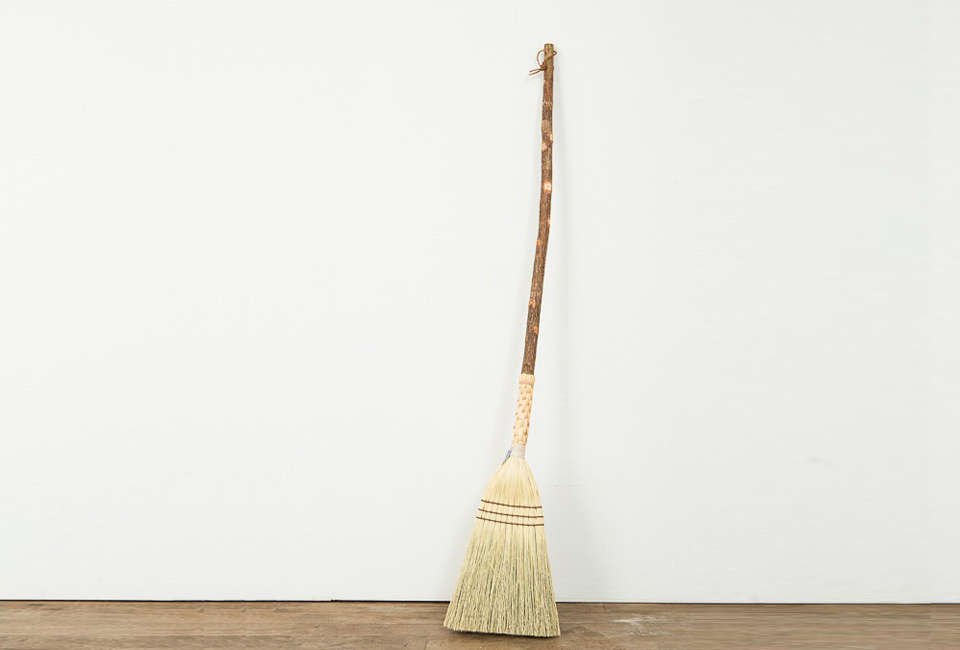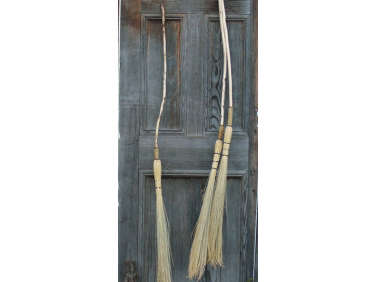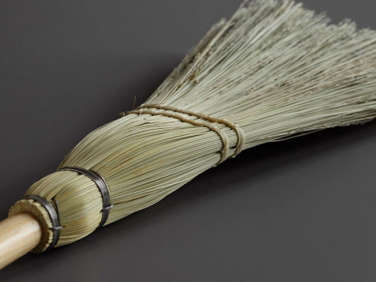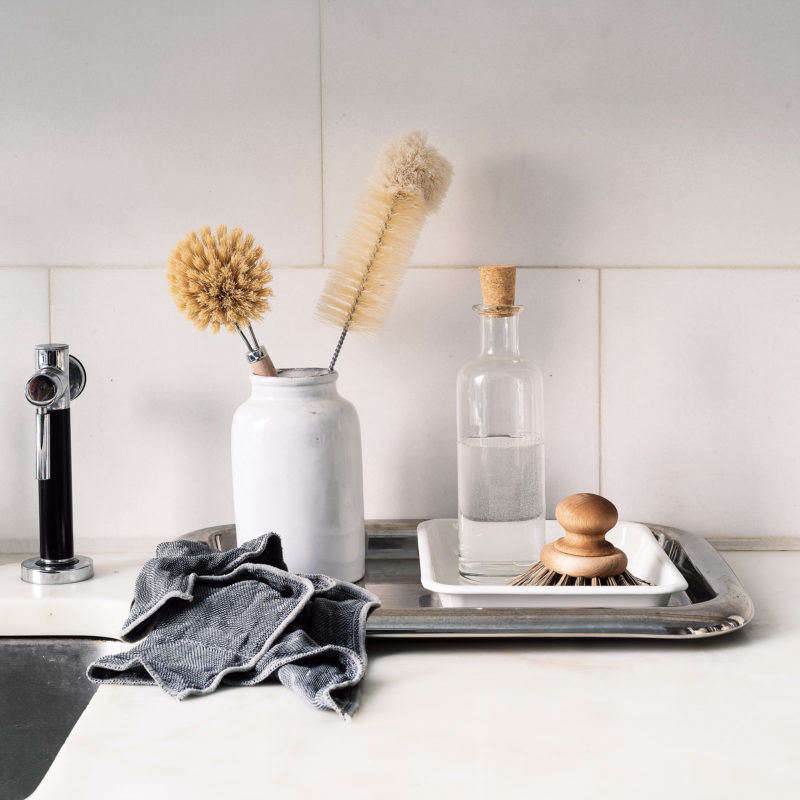The broom, enemy of spiders and friend to witches, has been aiding household cleaning since the dawn of domestic history. Initially made of anything on hand, from reeds to corn husks, the broom as we know it has evolved thanks to the early Anglo-Saxons, who turned the craft into an organized trade. Besom squires, as these tradesmen were known, gathered the brushlike twigs of birch trees and bound them with willow wisps around a thicker tree branch, often made of hazel. This gave us the broom associated with witches, complete with crooked stick and untrimmed dark twigs.
The modern straw broom emerged in Massachusetts at the end of the 18th century with the discovery of sorghum grass, a local crop previously grown exclusively for animal feed. Long and strong, sorghum was soft enough to be trimmed to a uniform length, which made it perfectly suited for sweeping up fine particles of dust. About 30 years later, the Shakers, with their ever-inquiring minds, took the broom and improved its efficiency by flattening the broomcorn (as the grass became known) to give a wider and more precise sweep. All three styles have their uses today: The besom is preferred for outdoors; the round and flat brooms for indoors. In recent decades the rise of synthetics put the broom industry into a sharp decline. But of late, the artisanal broom, particularly the Shaker version, has been muscling its way back into our broom closets; here are some notable examples.
Five to Buy





Object Lessons columnist Megan Wilson is the owner of Ancient Industries and the curator of the Remodelista 100, a collection of everyday essential objects presented in the Remodelista book. Have a look at her past lessons on iconic designs, including:
- The Humble Cotton Cleaning Cloth
- Object Lessons: Shaker Storage
- Object Lessons: The Classic Canvas Tote
N.B.: This post is an update; the original story ran on October 21, 2014.










Have a Question or Comment About This Post?
Join the conversation